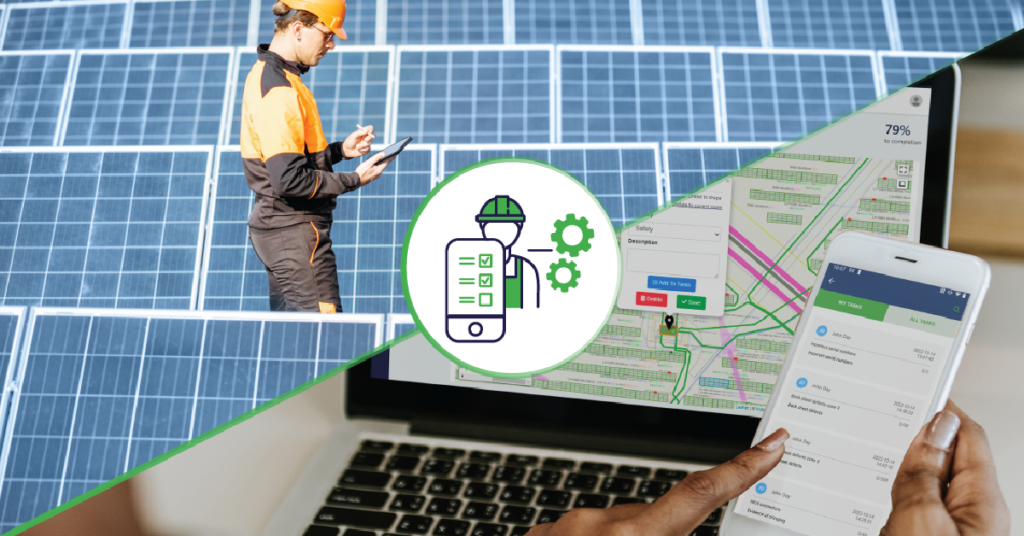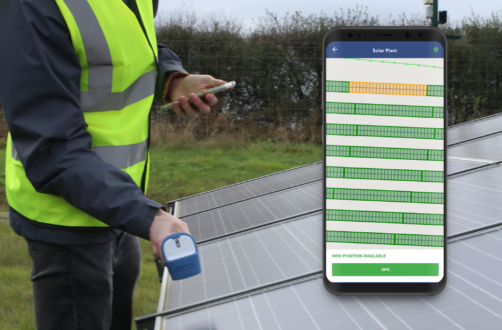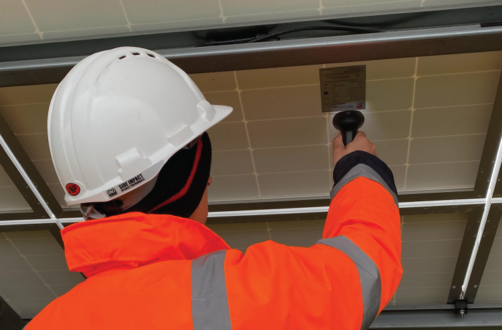Is your construction pipeline filled? Are you ready to plunge into building those awesome solar projects? But, you are overwhelmed by the challenges the increasing site sizes, cost pressure, high-quality expectations and labour scarcity pose for your operations? Then it might be a good moment to reconsider some of the processes and tools you are using during construction. In this blog post, we will discuss why solar construction management software is a valuable solution to many of your construction problems.

Why is solar construction management software important?
The challenges are ubiquitous: Solar companies are getting bigger and building in multiple locations. Hence standardization and quality assurance are harder to deliver. At the same time they are more important. Delivering in multiple locations at one time is incredibly difficult. How to maintain the same construction standards in, let’s say, Netherlands, Poland and Chile at the same time?
Additionally, assets are getting bigger. This poses unprecedented operational and quality challenges. Relying on traditional practices and tools to manage 100 MW construction compared to 10 MW construction is stretching these tools beyond their limits.
Even more challenging, post-subsidy projects have tighter budgets and more work needs to be accomplished with fewer people. At the same, time asset life expectancy has increased from 20 years to around 40 years. When ramming the first pile, it is already clear that component quality, warranty and obsolescence issues will play a major role in the lifespan of the asset.
What technical debt has to do with solar construction management software?
Facing the above-described challenges, it seems easy to sometimes go for the quick fix. Finding workarounds for one problem after the other sometimes seems faster than considering a holistic approach. After all, projects need to get done quickly and time is money.
Unfortunately, this approach is solving the problem now but pushing it to a later point in time. In software development, this approach has coined the term technical debt. To quote Wikipedia, “Technical debt…is the implied cost of future reworking required when choosing an easy but limited solution instead of a better approach that could take more time.”
It’s also a good term to use in the context of the rapidly growing solar industry.
In this context, technical debt is the accumulation of issues relating to poor design and construction, which result in a disproportionately high operational overhead and associated costs.
The reason why this is so relevant now is that exponential growth is underway in the solar industry. And the biggest risk to this growth is the availability of the human resource required to make it happen.
The industry needs to step up its game with how it designs and constructs new solar assets. If we don’t make improvements soon, we’re likely to see the impact of technical debt increase exponentially. It will draw on our finite resource pool and ultimately stunt growth across the board.

Choosing the best solar construction management software
However, we believe that using innovative technology is a solution to the problem of technical debt. With the right solar construction management software it is possible to tackle the challenges effectively and manage quality better.
The market for solar construction software is still young and therefore developing rapidly. When looking at the options the choice can be confusing. Based on our experience working with our customers and contributing to the discussions in the Solar Power Europe EPC Best Practice Guideline Working Group we have compiled a list of specifications for solar construction management software that, from our experience, are relevant.
In this list, we focus on various aspects.
For one, the capability to identify major construction issues that will cause delays and cost money is essential. The effective management of this process is achieved by leveraging a combination of top-tier data and advanced data analytics techniques.
Furthermore, the capability to qualify and pace construction progress through software helps to make construction supervision more efficient.
Additionally, collaboration through software, both with internal team members and external partners, is relevant to keep track of the many moving parts of a construction project.
And – as a premium – the question of how far the solar construction management software can set the baseline for improved condition monitoring during the life of the asset. This tabs again upon topics such as the performance of PV module serial number scanning, whose value we have analysed in a previous blog post.
Download the Solar Construction Management Software specifications list here



